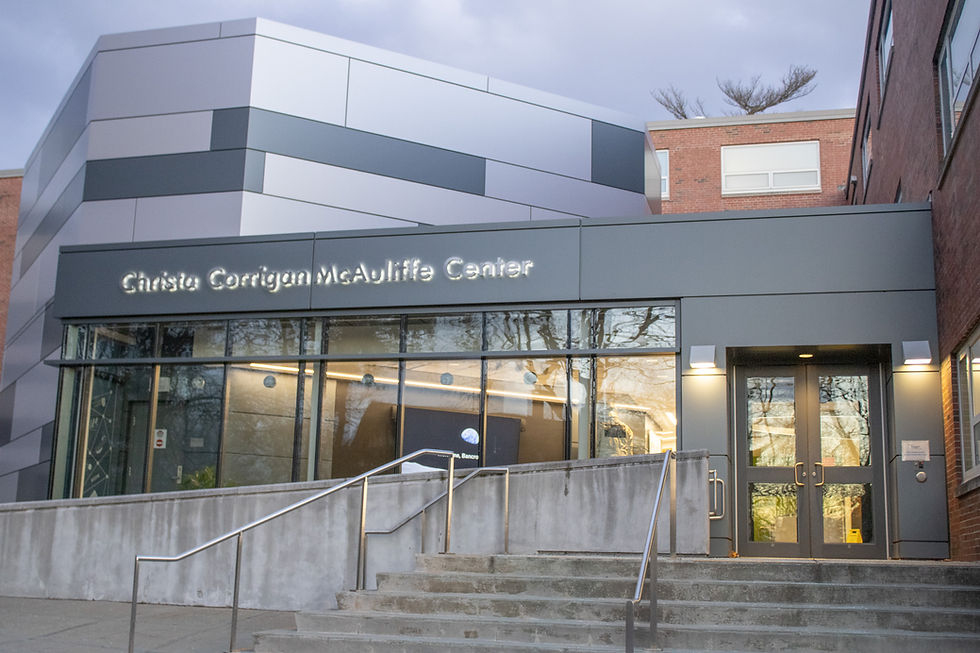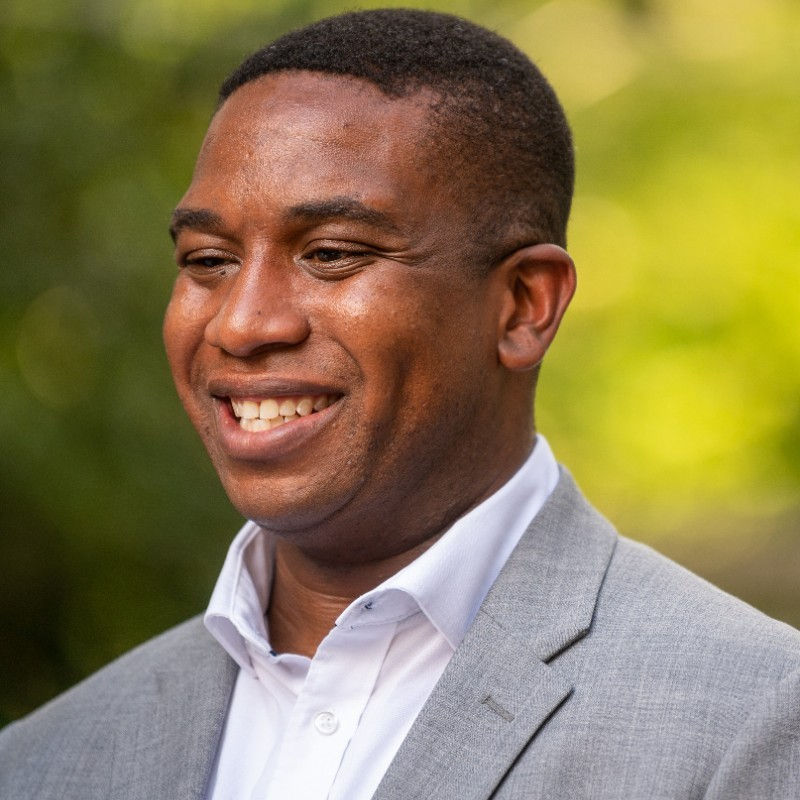All University Meeting provides enrollment updates
- Adam Harrison
- May 6, 2024
- 8 min read

By Adam Harrison
News Editor
FSU administrators presented strategic enrollment data and retention initiatives at the All University Meeting on Monday, April 29.
President Nancy Niemi opened the meeting, saying she appreciated the large number of faculty and staff in attendance.
“If you’re here, that clearly tells me that you understand that enrollment, retention, and persistence is about all of us,” she said.
Niemi said the previous model of enrollment relied solely on admissions without faculty support or input, and lacked any focus on retention.
The old model “didn’t consider how important it is that we keep our students here, and help them learn to graduate.
“And we understand now that it is all of our work and all of our jobs. I’m very glad that we have the opportunity to see the realities of what we’re doing right now,” she said.
Iris Godes, dean of strategic enrollment management & chief enrollment officer, presented current enrollment and retention data compared with that from AY 2023-24.
She said the University currently has a 6% increase in submitted applications and a 3% increase in admitted students from the same time last year.
As of April 29, there are 4,863 applicants and 3,947 admitted students.
She said the goal for new undergraduate student deposits is 785.
Godes said deposits were “343 as of this morning. I think we’re actually at 344 right now, but I went for lunch - so it keeps changing by the moment. We’re 44% of the way there as of now.”
She said the deadline for deposits has been pushed back to June 1 because of issues with FAFSA - Free Application for Federal Student Aid.
Most students are not able to make a decision until they receive their aid, “so comparisons right now are meaningless, and we’ll see. I’ll feel better about doing a comparison in July,” she said.
“But the good news is that we’re 44% of the way there with our students not knowing what their financial aid is,” she said.
She said 4,800 FAFSA applications have been received as of April 25, which is 22% behind last year at this time.
Godes said, “We are working really hard to close that gap.”
She said the low FAFSA application numbers for FSU are similar to the application rates for other universities in Massachusetts.
She said only 40% of high school seniors in Massachusetts have completed the FAFSA application.
Godes said, “Financial aid rewards are just starting to happen, so financial aid has been able to pull it all together.
“And on Friday, there were over 300 students … whose financial aid awards are going out,” she said.
Godes said the focus will be on incoming students “since they’ve been waiting forever. Then hopefully, we can catch up by June - which is the tradition here - and returning students will start to get theirs as well.”
Due to the significant changes in the FAFSA formula, more students will be able to qualify for Pell Grants.
“Over 50% of the applicants are eligible for Pell Grants, and Caitlin [Laurie] and I were looking at some of the adjusted gross income of these families. There are six-figure families getting Pell Grants,” she said.
She said it is very important for students to apply for the FAFSA, and faculty should not end a conversation with a student before asking if they’ve filed.
Godes said the marketing and communication process for strategic enrollment management begins with obtaining prospective student names from many sources.
“This is getting harder and harder to do because there are fewer of them,” she said.
One method that is not as effective is buying name data of students who took the SAT from the College Board. Many universities are test-optional, so not as many students are taking standardized tests, she said.
In the past, the primary communication was going to seniors in high school and potential transfers, she said.
Godes said, “This year, we have added sophomores and juniors with the goal of building a relationship with them and making sure they understand who we are, to keep them excited about what Framingham State has to offer.”
She also said marketing plans include the reworked FSU website, mailing viewbooks to 30,000 prospective students, creating an enrollment checklist to make the process more smooth, and advertising on niche.com.
If students are viewing Bridgewater State on niche.com, “they are presented with Framingham State as well. So if they don’t think to look at Framingham, we’re pushing it to them,” she said.
“The new management teams are all meeting and functional. … This is really helping us from my perspective, to knock down those silos that everybody talks about, and be much more collaborative in how we’re getting things done,” she said.
Lorretta Holloway, vice president of academic enhancement, said summer outreach for registration last year was “painful.”
On May 3, 2023, there were 732 returning students consisting of 256 freshmen, 199 sophomores, 151 juniors, and 126 seniors who had not registered.
On April 29, 2024, there were 585 returning students consisting of 216 freshmen, 160 sophomores, 138 juniors, and 71 seniors who had not registered, showing an improvement of 147 students.
She said one method they used to improve retention numbers and to communicate with students who had not registered yet was to “split up the list depending on home language.
“We have certain people on my team who speak Spanish and Portuguese, so if you’re going to call the home and talk to the mom, I want you to explain what’s happening and why we’re calling the house,” she said.
The Office of the University Registrar and The Advising Center also contributed to better preparing for outreach planning by “getting advising lists out to faculty, posting advising lists, helping to create ways in which we were able to contact students - emailing students, texting students when they were available to be able to register, and doing a follow up,” she said.
Holloway said the summer outreach team has plans for every week starting next week.
She said there has been confusion regarding the move-in policy with students who don’t have a full semester with full courses, and early arrivals.
“We have a new move-in policy basically saying that if you’re a resident student here on early arrival, you have to take care of everything by August 1st, and if you’re just a regular resident student, you need to take care of everything by August 15th,” she said.
She said the outreach team is working hard to help students meet these deadlines, and she is grateful to Dean Sue Dargan and the several department chairs who volunteered to help.
History Professor Joseph Adelman said, “The critique I raised in the context of retention is that a lot of the framework of what we’re talking about today is based on the students who want to come back, plan to come back, and would like to come back.”
He said a lot of students are facing barriers in the University due to unclear policies, and faculty also not being aware of all of these policies and sending students elsewhere.
Adelman asked, “For students who were turning off from Framingham with the ways in which our policies are processing - bouncing people back and forth from one office to the next - how are we going to address that problem and try to make it so that we have more students who want to stay here?”
Niemi said, “We are painfully aware of those barriers, and the silos that we put up, and the processes that compete with each other, and we’ve been working very hard to identify them and then work across our divisions to fix them. It is not easy. That’s not an excuse - it’s an explanation.”
Holloway said they’ve asked students during workshops about roadblocks to degree completion, and emailed student club leaders for input.
She said she asked students, “What do you see as the biggest barriers to you finishing? If you know people who left, why did they leave because of these things? Then I just sat there because I didn’t have to say anything else, because they had a lot of things to say.
“But we have to also remember, we’re trying to turn the ship around in the Panama Canal, and it’s going to take a long time,” she said.
Holloway said the administration should be trying to create action plan teams as opposed to general committees in order to focus on problem solving.
“I think we project what we think they [students] need, as opposed to really looking to see what they need,” she said.
Anne Roberti, executive director of English Language Programs and Community Education said, “I recently heard this weekend that the Natick Mall has advertisements for both Bridgewater and Salem State, but not us.”
She said UMass Amherst and UMass Lowell were “cannibalizing” FSU already, and it is discouraging to see Bridgewater and Salem States’ advertisements “in our own backyard.
“And please, please, please can we get our advertisement off the trash trucks?” she asked.
The attendees applauded in agreement.
Godes said, “The trash trucks that they are on are only supposed to be the recycle plant types of trucks, and the thought was that it was sort of sustainability and climate” focused.
She said FSU is not paying for the advertisements and they should not have been on any garbage trucks to begin with - only the trucks for recycling.
She urged faculty to email Dan Magazu or herself if they see an advertisement on a trash or recycling truck, so they can contact the advertisement agency and have it removed.
“We are focusing our advertising less in physical spaces and more digitally. That’s where students are. You’re not seeing them because you’re not the target market,” she said.
Godes said that was a strategic decision based on research in order to best use the limited advertising budget.
A member of the community said, “I was driving behind one of the buses the other day, and they have their ad, ‘Community colleges free for adults over 25.’ Are we making plans for when those community college students who start this year finish in two or three years?”
Godes said they are currently working with MassBay Community College to create a “wonderful program that seamlessly gets people here. Once we have that established, then start to branch out and go to Quinsig [Quinsigamond] and go to Bunker Hill.”
Criminology and Sociology Professor Jonathan Martin asked, “My department has an astonishing number of underenrolled courses. I’m wondering if you have a breakdown in these numbers by major and do you have any observations about why your campaign might have been more effective for some majors than others?”
Holloway said the data didn’t show any trends specifically pertaining to any major or year, and that “it more or less seems to be all over the place.”
She said the main issue was an overall lack of student engagement both in classes and in clubs and activities.
“How are we all as a community dealing with students who in many ways would rather just be at home or in their rooms and underneath their blankets?” she asked.
“This is a problem across the country,” she said.
Niemi said, “We are working strategically. We are working very hard. We’re working across the University, across divisions and departments.
“We know that this is being solved over time. It took a long time for the world to change to get us to this point and it’s going to take time for the world to change to get better. But we are getting better, and it’s wonderful to see - because of you, we are working together to get better,” she said.





